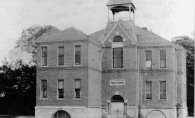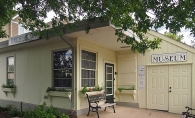If the future ghosts of alumni past gathered around a St. Paul Central High School (SPCHS) lunch table, the conversation might feature cartoonist Charles Schulz and Richard Schulze, founder of Best Buy, debating the cost-benefit analysis of an extra “e,” or aviation pioneer Amelia Earhart and Jawed Karim, co-founder of YouTube, discussing their penchant for traveling into unchartered territories.
While there is an attendance sheet full of notable former SPCHS students, the school community is celebrating its history, all alumni and staff during this year’s 150th anniversary.
Retired teacher Jack Schlukebier is part of a group that is organizing the anniversary celebration. “We’re all interested in calling attention to the fact [that the school] has been a bulwark of the St. Paul community for 150 years,” the longtime instructor says. “People want to be part of that, and it’s important to call the community’s attention to that and celebrate it.” Mary Mackbee, principal since 1993 and longtime school district staff member, wants to organize monthly events, along with the school’s participation in the Rondo Days parade in mid-July. “We know it’s going to be an exciting year for us,” she says.
SPCHS has had an exciting 150 years as the state’s oldest continuously-operating high school. It opened its doors in 1866 on the third floor of the Franklin School, on Broadway and 10th streets, with Eugene Foster as principal. The school expanded in 1872 to the second floor of the Lindeke Building at Seventh and Jackson streets. The good news was students could trot downstairs to the building’s dry goods store—the bad news was that it also featured a fish market. Add warm temperatures with the scent of fresh fish and factor in a rat infestation, and the sum doesn’t equal an optimal learning environment. Sadly, the students had little choice in the matter. “A sign over one door reminded pupils this was their ‘last chance for an education,’ ” notes the SPCHS website.
After a few starts and stops, a 27-room building was completed at 10th and Minnesota streets in 1883. By 1888, an annex was added, the Debate Society produced plays to fund an astronomical observatory, and SPCHS was the lone school in the country to house a fixed telescope. The moniker Central High School was first used during this period. The school moved to its current location on Lexington Parkway in 1912, and the site’s extensive remodeling and expansion project was completed in 1980.
This year’s graduating class is expected to be around 460 students, which is a far cry from the gender-balanced, inaugural graduating class of 1870—one boy and one girl, who received handprinted sheepskin diplomas. Fannie Haynes, the lone female student, was the daughter of the school’s teacher, Mrs. H.M. Haynes. Perhaps it’s fitting that the school began with familial connections, since the way Mackbee describes the school today is having “a family kind of environment, with strong academics.”
Mackbee’s tenure has included augmenting the school’s International Baccalaureate program, increasing advanced placement classes, continuing the Quest program, which is a gifted and talented program offering honors humanities classes, and instituting College in the Schools with the University of Minnesota. “We’ve become much more known for our academics,” she says. Mackbee also points to three ingredients for the school’s success—staff, students and parents. “I think we have an excellent staff, people who stay,” she says. “We don’t have a lot of turnover.” Staff, Mackbee says, is devoted to promoting quality academics, honoring cultural diversity and ensuring student safety. “We’ve had a lot of honors come to us through our students,” Mackbee says. “All kids can achieve here—all races, all economic [ranges].” She also points to parents’ involvement, which includes, but is not limited to, Transforming Central—efforts to reshape the campus’ exterior landscape “to reflect the rigor and the vibrancy of the school,” she says.
Mackbee is often struck by the community connections to SPCHS. “The family extension is huge,” she says. “It’s inspiring to be [out in the community], and at least one person has a connection” to the school. St. Paul’s bond to the high school is not lost on her. “The history of this city connects to this school,” Mackbee says. Alumni remain connected in various ways, including as staff and parents/grandparents of students, and through financial support. Mackbee says the class of 1963 has raised about $500,000 for a program that annually provides approximately ten $5,000 college scholarships for graduating seniors. “There’s a strong, continued interest in the well-being of this school,” Mackbee says.









